Illustrations from
Illustrations from
Kitab al-makhzun li arbab al-funun
by al-tarâbulusî
A manual of military practice and horsemanship, Egypt or Syria, 1578-1579.
Rest the mouse cursor over a thumb-nail to see the title. Click to see the larger image.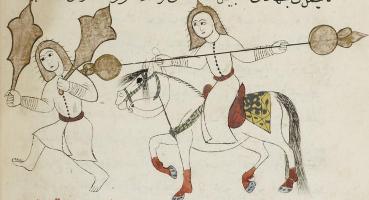
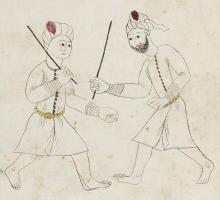
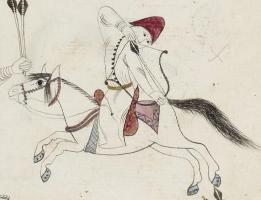
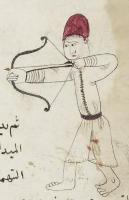
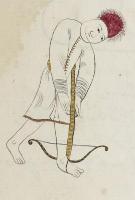
Source: Bibliothèque nationale de France, Département des manuscrits, Arabe 2826
The work is part of a literary production that was very widespread in Islamic civilization, relating to the field of the furusiyya. This Arabic term relates to all the theoretical and practical knowledge of a range of specialities: horse riding, the veterinary arts, games (polo, boxing, hockey, chess, etc.), and the military arts (handling weapons, etc.). The concept was introduced in the Abbasid era in the second half of the eight century, in the princely context; the areas covered in the furusiyya were essential for the education of pretenders to the caliphal throne. The furusiyya became an institution of the state from the foundation of Baghdad under al-Mansūr (reigned 754–775). It was during this era that Ibn Akhi Hizam, commander of the professional army of Khurasan, in the service of the Abbasid Caliph al-Mutawakkil, wrote the first of theses treatises (Kitab al-furusiyya wa-l baytara) comprising two parts: one dealing with the hippology of equitation and the veterinary arts, and the second consecrated to military equitation, arms, archery, and polo.
The Mamlūk period (1258–1517) is a very well documented period in this field. The treatise of Hizam was copied many times, and this kind of literature became very common, particularly through the production of works for the education of the public, which this manuscript is part of.
Although written during the Ottoman domination of Egypt, this collection is part of the Mamlūk tradition. The horsemen represented are dressed in the clothes reserved for the military cast of the Burji Mamlūks, who held power in Egypt and Syria between 1382 and 1517, until their defeat by the Turks. The style adopted is very sombre: black ink drawings, colour reserved for certain details like the harnesses of the horses, the hooves coloured in henna, and the horsemen’s bonnets. This simplicity ties in with the documentary and pedagogical purposes of the illustration.
Source: Qantara.
10th to 19th century Egypt and its territories
Other 16th Century Illustrations of Costume & Soldiers
Index of Illustrations of Costume & Soldiers
